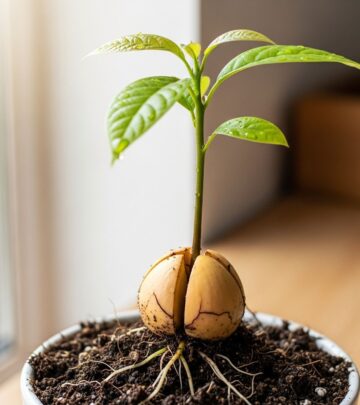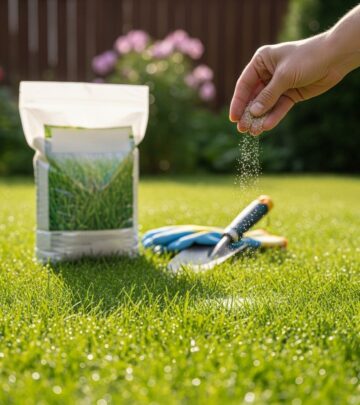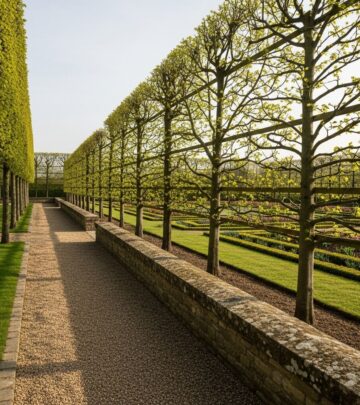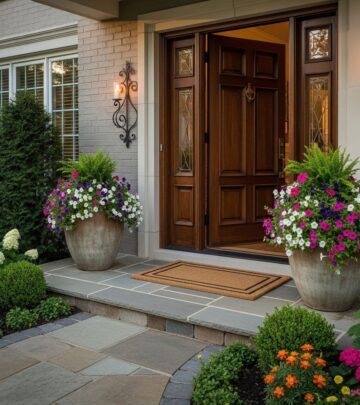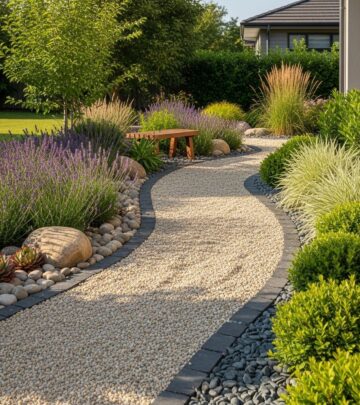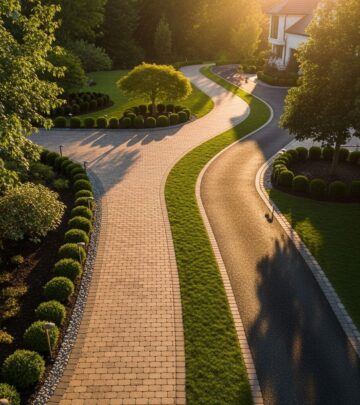Landscape Design Tips: 10 Expert Ideas For A Beautiful Garden
Transform your outdoor space with timeless design strategies, practical tips, and eco-friendly ideas for every style and garden size.
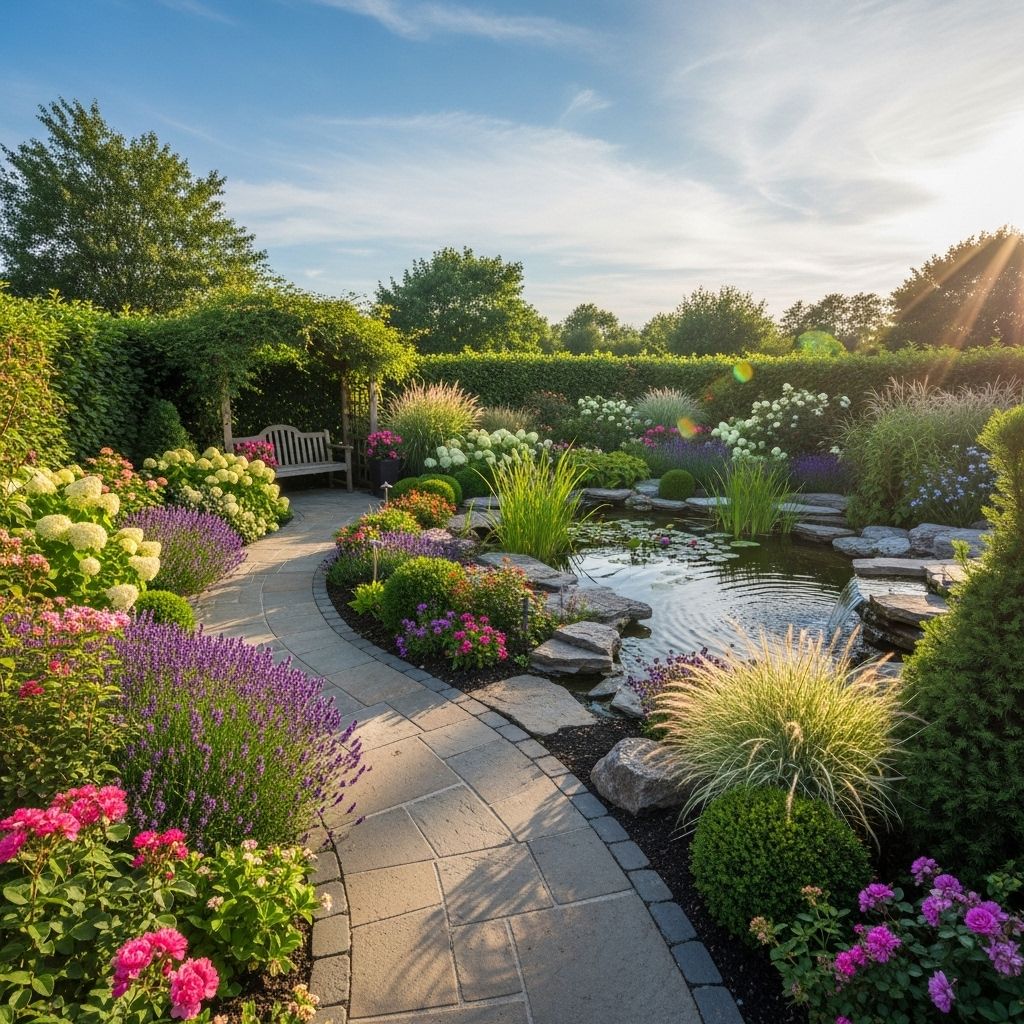
Image: HearthJunction Design Team
Expert Landscape Design Tips for a Beautiful Garden
Creating a beautiful garden isn’t just about planting a few flowers and hoping for the best. Exceptional landscape design relies on understanding your site, planning with intent, and using a range of techniques to achieve harmony, structure, and lasting beauty. Whether your vision is lush and layered or minimalist and modern, these expert landscape design tips will help you transform your yard into an impressive outdoor sanctuary.
1. Start with a Plan: Assess Your Site
Every great garden begins with a careful evaluation of your space. Take time to walk your property and observe:
- Sun and shade patterns: Identify areas that get full sun, part shade, or deep shade throughout the day.
- Soil type and drainage: Check if your soil is sandy, clay, or loam, and watch how water flows after rain.
- Wind and microclimates: Take note of breezy spots or protected corners where plants might thrive or struggle.
- Existing features: Trees, structures, slopes, and views all play a role in your eventual layout.
Document your observations in a simple sketch or with photos, marking utilities, pathways, and areas for planting or seating. Starting with a clear understanding ensures every design decision is informed and purposeful.
2. Establish Your Garden’s Purpose
Before planting, ask yourself: What do you want from your garden? Defining function is essential:
- Is this a space for entertaining, relaxing, or play?
- Do you need room for growing food, or do you want a flower-filled retreat?
- Will pets or children be using the space regularly?
- Are you hoping for a private oasis or an open, social yard?
Your answers guide the placement of pathways, patios, play areas, and focal features. Always match your ambitions with reality—consider ongoing maintenance and your desired level of involvement.
3. Choose a Landscape Style and Theme
Let your personal taste, home architecture, and local climate inspire your design direction. Some popular landscape styles include:
- Cottage Gardens: Abundant, informal plantings and winding paths create a relaxed, colorful atmosphere.
- Modern Minimalist: Clean lines, sculptural plants, and a limited color palette offer a sense of order and elegance.
- Woodland Retreats: Naturalistic layouts use native trees and shade-loving perennials for a calm, forested feel.
- Mediterranean: Drought-tolerant herbs, olive trees, gravel, and terracotta features evoke warm-climate charm—even beyond dry regions.
- Zen Gardens: Sand, stones, and subtle plantings create serene spaces for contemplation and relaxation.
- Tropical Escapes: Lush foliage and bold colors transport you to paradise with dramatic effect.
- Night Gardens: White and silver plants, uplighting, and moonlit features maximize after-dark beauty.
Use inspiration from travel, magazines, or nearby gardens, then adapt your favorite elements to suit your environment and needs.
4. Structure Your Space with Layers and Rooms
Break your garden into outdoor “rooms” to give each zone clear purpose and a sense of enclosure. Some ideas include:
- Patios or decks for dining and lounging
- Paths that guide movement and connect spaces
- Privacy hedges or trellises to define boundaries
- Open lawns for play, framed by perimeter beds
Layering is also crucial. Position taller plants and trees at the back or center, with medium shrubs and low-growing plants in the foreground. This approach provides depth, hides fences, and ensures visual balance. Try to avoid planting isolated spots—repeating plant masses in odd numbers (such as three, five, or seven) creates a restful, cohesive look, while mixing too many single plants can make the design appear chaotic.
5. Create Focal Points and Flow
Every garden needs eye-catching moments and a sense of journey. Design with sightlines and focal features in mind:
- Focal Points: Use sculptural plants, specimen trees, water features, or artwork to draw attention and anchor your design.
- Pathways: Curved or straight, wide or narrow, paths provide structure and invite exploration. Pathways can also become focal elements if you experiment with materials and patterns.
- Views: Frame views from your windows or main patio, ensuring you see beauty from both inside and outside your home.
To create a flow between spaces, align features along “lines of force”—imaginary gridlines based on your house or property lines—so that movement feels natural and integrated.
6. Work with Texture, Color, and Form
Mixing different plant shapes, leaf textures, and colors adds richness and complexity. Successful gardens balance contrast and repetition:
- Texture: Blend fine, medium, and coarse foliage for visual interest. Ornamental grasses, ferns, succulents, and evergreens all contribute unique textures.
- Color: Stick to a simple palette for a harmonious look, or use bold contrasts for drama. Remember to include plants with interesting bark, berries, or fall color for year-round appeal.
- Form: Mix upright, mounding, and trailing plants to create rhythm and movement throughout the space.
Group similar plants together in generous drifts rather than scattering them. Repeating plant groups helps tie different parts of the garden together and gives the eye a place to rest.
7. Incorporate Structural Elements
Beyond plants, hardscape features provide definition and function. Consider including:
- Paths: Gravel, stone, wood chips, or paving create inviting routes and keep feet clean.
- Walls and Edging: Retaining walls, raised beds, or simple edging materials tidy up beds and manage slopes.
- Fences and Screens: Provide privacy, safety, and a backdrop for special plantings.
- Water Features: Fountains, ponds, or birdbaths offer sound, movement, and attract wildlife.
- Pergolas and Arbors: Structure vertical space and support climbing plants.
- Outdoor Lighting: Accent pathways, trees, or art for extended enjoyment after dusk.
Install major features and infrastructure (like irrigation, wiring, or drainage) before you plant, to avoid disrupting your finished beds later.
8. Select the Right Plants
Choose plants suited to your climate, soil, and sunlight. When composing your palette, remember:
- Mix evergreens, deciduous shrubs, perennials, and annuals for year-round beauty.
- Include a range of heights and forms—tall, medium, and low—to build structure and avoid monotony.
- Add ornamental grasses or shrubs for texture, structure, and movement in the breeze.
- Consider native plants for low maintenance, resilience, and support for local wildlife.
- Use odd-number groupings for plant masses, and repeat groups for harmony.
Before buying, read plant labels carefully to match mature size and growth needs with your plan.
9. Design for Eco- and Wildlife-Friendliness
Support the environment and create a vibrant, living landscape by:
- Planting native species to attract birds, butterflies, and pollinators.
- Designing a butterfly or pollinator garden with nectar-rich blooms and host plants.
- Including berry bushes, seed-heads, and water features to support wildlife year-round.
- Using water-wise plants and drip irrigation to conserve water.
- Incorporating permeable materials and rain gardens to manage stormwater runoff.
Healthy gardens don’t just look good—they nurture local ecosystems and can even help reduce your maintenance load over time.
10. Prioritize Practical Steps and Maintenance
Keep your project manageable by working in logical stages:
- Clear the Site: Remove anything unwanted, such as old paving, invasive plants, or debris.
- Install Infrastructure: Set up fencing, lighting, irrigation, and drainage early on.
- Plant Hardscape and Major Features: Place patios, walls, arbors, and big trees before delicate plantings.
- Define Borders: Shape beds and install edging for neat lines.
- Plant in Layers: Start with trees and shrubs, then add perennials, annuals, and ground covers.
- Add Finishing Touches: Place pots, artwork, and furniture to complete the design.
Remember, gardens are living creations. Plan for growth, and be prepared to edit, divide, and refine your space over time.
Sample Garden Design Principles Table
| Principle | Description | Example |
|---|---|---|
| Unity | Create a cohesive look by repeating elements | Use of the same shrub in several borders |
| Balance | Arrange plantings and features evenly for stability | Symmetrical beds or evenly spaced trees |
| Focal Point | Highlight a key feature to draw the eye | Statue at the end of a path |
| Rhythm & Movement | Guide the viewer with patterns and pathways | Repeating flower colors along a winding path |
| Proportion | Size elements appropriately for the space | Using small trees in small yards |
Frequently Asked Questions (FAQs)
Q: How do I choose the right garden style?
A: Consider your lifestyle, desired maintenance level, architectural style, and local climate. Visit public gardens or use online resources as inspiration, then adapt the elements you love to your own yard.
Q: What’s the best way to create a low-maintenance garden?
A: Select drought-tolerant, pest-resistant, and native plants. Mulch beds well to suppress weeds, install drip irrigation, and minimize lawn area in favor of layered plantings and hardscape.
Q: Should I hire a professional or design my own garden?
A: Many homeowners successfully DIY with research and patience. For complex projects, heavy construction, or design challenges, consulting a professional landscape designer can save time and deliver exceptional results.
Q: How can I start designing my garden if I’m a beginner?
A: Start small. Focus on one area at a time, such as a front border or backyard bed. Sketch your ideas, research plant needs, and experiment with layout before making permanent decisions.
Q: What are the most important principles for successful garden design?
A: Unity, balance, focal points, repetition, and proportion are all essential. Always plan your space thoughtfully, plant in layers, and combine hardscape with lush, varied plantings for a dynamic result.
Conclusion
With careful planning and attention to proven design strategies, anyone can create a landscape that is both beautiful and functional. Blend your personality and needs with the enduring principles of landscape design to craft an outdoor space you’ll love for years to come. Embrace change, have fun experimenting, and remember: great gardens grow over time—just like your skills as a designer.
References
- https://www.highcountrygardens.com/content/gardening/9-tips-professional-looking-garden-design
- https://littleterracedhouse.com/2021/04/22/a-beginners-guide-to-designing-a-garden/
- https://www.gardendesign.com/landscape-design/
- https://www.monrovia.com/be-inspired/how-to-lay-out-a-garden.html
- https://www.gardenary.com/blog/how-to-start-a-garden-part-2-creating-a-garden-design
Read full bio of Srija Burman





